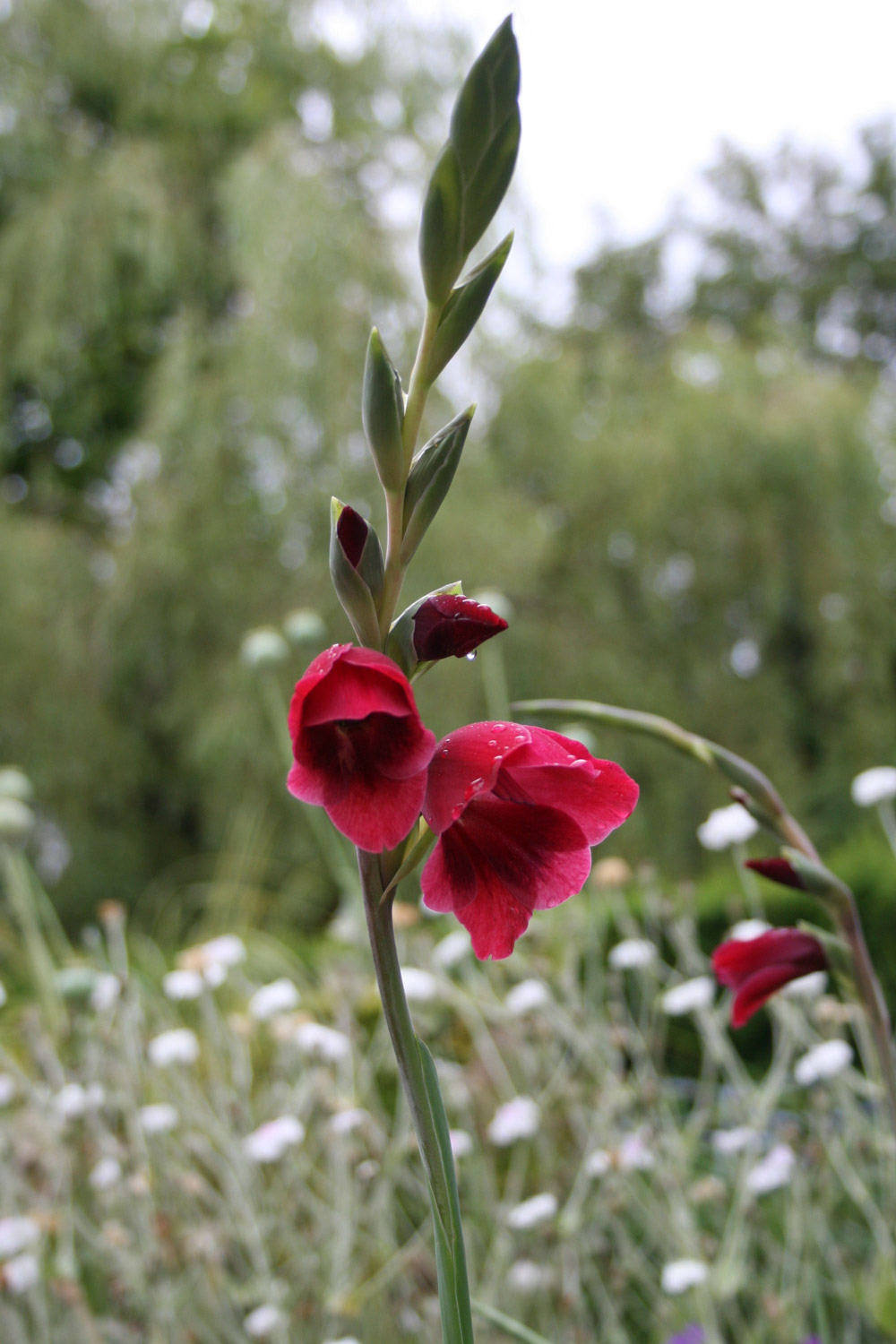By Sally Gregson.
We are all familiar these days with gladioli cut and arranged in a tall, narrow-necked jug – or perhaps planted in a row in the vegetable garden. They may be the antithesis of today’s fashionable tousled, wildling garden plants, but their vibrant colours are very welcome indoors.
It’s often a good idea to look at some of the other, different species of a well-known plant and the genus Gladiolus does not disappoint. They are all from Africa and so most prefer a sheltered sunny spot with plenty of good drainage – they dislike muddling through a mixed herbaceous border on a rich, heavy soil. Plant the corms in Spring over a handful of grit in the sun.
Some of these other, daintier species and their hybrids are a little tougher than their bobby-dazzler cousins. From the mountains of East Africa comes Gladiolus callianthus, (once known as Acidanthera murielae) with its tall, white flowers and ruby-red central splashes. It’s the wonderful perfume that makes this species well worth growing in a container on the terrace for the late summer, or position a pot under an upstairs window where the flowers will perfume the bedrooms for weeks.
Another African species, G. cardinalis, has been crossed with G. tristis to produce G. x colvilei, which boasts a myriad of different-coloured flowers – from white to pink, through to bright red. There are the white flowers of ‘The Bride’ with a green throat, and soft pink ‘Amanda Mahy’ to give a lift to the late summer borders.
Then there’s the enthusiastic G. communis subsp. byzantinus with carmine-pink flowers that bounce their merry way through a sunny border in early summer. Often this will self-seed among its neighbours, popping up in unexpected spaces a few years later.
Towards the end of summer, G. papilio charms its many admirers with its sparse flowers, each in shades of buff-pink, cream and white, veined in violet with sulphur yellow markings. They seem to look at you through their eyelashes. Coy. Alluring. Beautiful.
Gladiolus papilio has been hybridised to produce one of the most beautiful gladiolus of all – G. x papilio ‘Ruby’. This glamorous beauty has the elegant shape and the hardiness of G. papilio, but its colour is a luscious, crimson plum, with a soft, silvery bloom. Plant the corms among the dusky, feathery leaves of bronze fennel to pick up the powdery shades. Pop them through a bed of ‘old’ roses which have finished flowering and by August they will steal the show.

Related Articles
EnvironmentNews May 5, 20240
Dorset hedgerow project gets £6,000 funding boost – but needs volunteers
A PROJECT surveying Dorset’s miles of hedgerows has received a funding boost. The Great Big…
EnvironmentNews May 4, 20240
Wild beavers return to rewilded Somerset area near River Frome
WILD beavers have been discovered at a Somerset site being rewilded. In December 2022, the…
NewsPolitics May 4, 20240
Garrick Club members pledge to resign ahead of vote to allow women to join
HIGH-profile members of the controversial men-only Garrick Club have written to bosses of the…








Leave a Reply